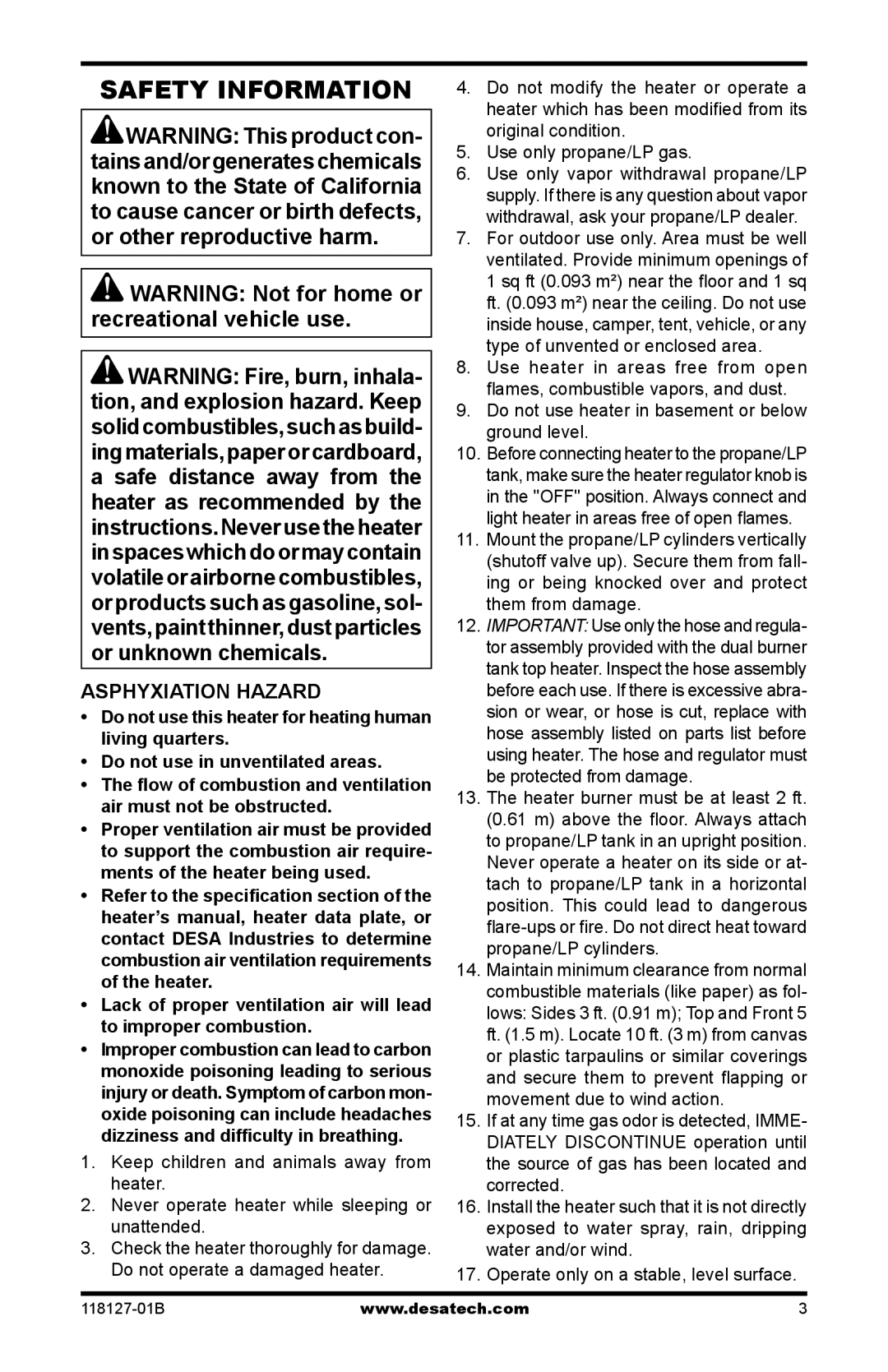000-24, 050 BTU, 000-12, TC110 8, TC111 8 specifications
Desa 050 BTU, TC111 8,000-12, and TC110 8,000-24 are innovative heating solutions designed to meet the diverse needs of modern consumers. These models combine advanced technology with user-friendly features, making them ideal choices for both residential and commercial applications.One of the standout characteristics of the Desa 050 BTU is its energy efficiency. This model is engineered to provide optimal heating while minimizing energy consumption. Users can benefit from lower utility bills and a reduced carbon footprint. The unit’s heat output capacity ranges from 8,000 to 12,000 BTUs, making it versatile enough for different room sizes and configurations.
The TC111 8,000-12 model also emphasizes energy efficiency, designed with cutting-edge technology to ensure effective heat distribution. The unit operates quietly, ensuring a comfortable environment without disruptive noise. The heater’s adjustable thermostat allows users to set their preferred temperature, contributing to personalized comfort and convenience.
In contrast, the TC110 8,000-24 offers a higher heat output, making it suitable for larger spaces or environments that require consistent heating. This model features a robust build designed to withstand frequent use, ensuring reliability and longevity. It also comes equipped with a user-friendly control panel, simplifying the operation process for any user.
Both the TC111 and TC110 models incorporate advanced safety features, including automatic shut-off mechanisms which activate under unsafe conditions. This provides peace of mind for users, knowing that their safety is prioritized. Additionally, these heaters are designed with portability in mind, allowing for easy movement from one room to another as needed.
One of the key technologies utilized in these models is infrared heating, which warms objects and people directly rather than heating the air. This results in quicker warmth and greater comfort for occupants, making these heaters highly effective in various settings.
Overall, the Desa 050 BTU, TC111 8,000-12, and TC110 8,000-24 represent a blend of efficiency, safety, and user-friendly technology. Whether for home use or in a commercial setting, these heating solutions offer reliability and superior performance, ensuring warm and comfortable spaces during cold weather. With their advanced features and robust construction, users can trust in the durability and efficiency of these heating systems for years to come.

